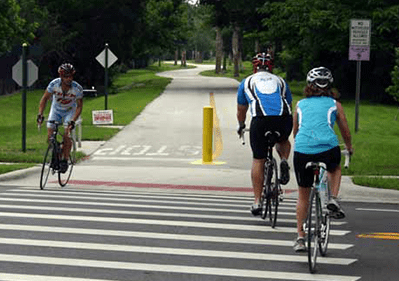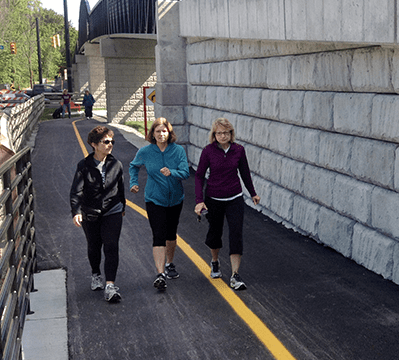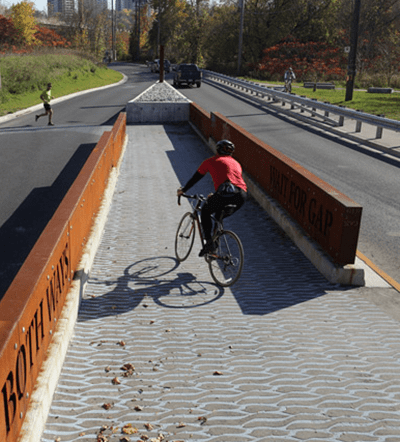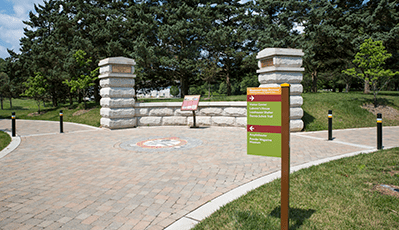 KNOWING WHERE YOU ARE
KNOWING WHERE YOU ARE
Not only is it critical that trail users know where they are to traverse the greenway system, but it is a key element to their sense of safety and well-being on the greenways. There are several elements that communicate location to users:
- Signage
- Trail pavement materials and striping
- Repetition of trail features, such as walls or columns
SEEING WHAT IS AROUND YOU
Visibility is another essential safety component on the greenways. Users should be able to see what is ahead while moving at both slow and relatively fast speeds. They should also feel comfortable, with enough visibility into the greenway from the surrounding areas and few obstructions which would create hiding spaces:
- Clear sight lines, including limbed-up trees
- Lighting in critical areas like trailheads and urban corridors
- High visibility markings at vertical obstructions, i.e. bollards
- Trail striping and signage to guide users, i.e. on curves with limited visibility
DANGER MITIGATION
Designs should take into account the variety of greenway user types and their specific needs. For example, bicyclists require a special level of consideration due to high speeds. Hazards along the greenway such as vertical drops, obstructions in the trail, or curves with limited visibility need to be accounted for:
- Handrails and guardrails should be designed to ADA specifications to protect trail users from hazards such as steep slopes and drop offs.
- Striping and high visibility markings
- Turf shoulders and recovery zones for instances where users may accidentally leave the trail
- Placement of furnishings and other elements to allow adequate safe clearance
- Follow overarching standards for design, see Overarching Standards for Greenway Development
LIMITING CONFLICTS
Conflicts are inherent in multi-use facilities. The mixing of pedestrians and cyclists needs to be carefully considered on each greenway. Furthermore, the intersecting of greenway users and other nearby residents should be part of safe and accessible design.
- Trail material and striping to distinguish distinct uses
- Centerline striping for more consistent greenway habits
- Sight lines and well-designed trail connections to limit conflict
- Pedestrian concentration areas, like restrooms, away from primary trail
- Limit cross trail movements, for example a location where the trail might separate a parking lot from a destination playground would always present many conflicts
- ADA accessibility
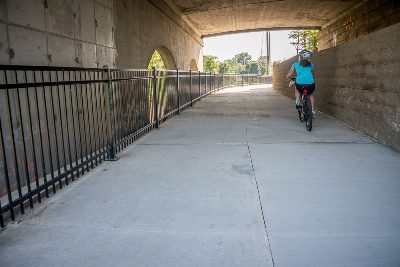 PROTECTION FROM CARS
PROTECTION FROM CARS
Fear of cars is one of the primary reasons adults list for not riding bicycles, the greenways are meant to provide a safe and comfortable experience distinct from riding in the roadway or walking on the sidewalk.
- Provide adequate vertical and horizontal buffers from the roadway at all times
- Well designed, high-visibility crossings are critical, signalization should be considered
- Vertical barriers like bollards and guardrails where vehicles pose significant threat
- Sight lines and visibility are critical

